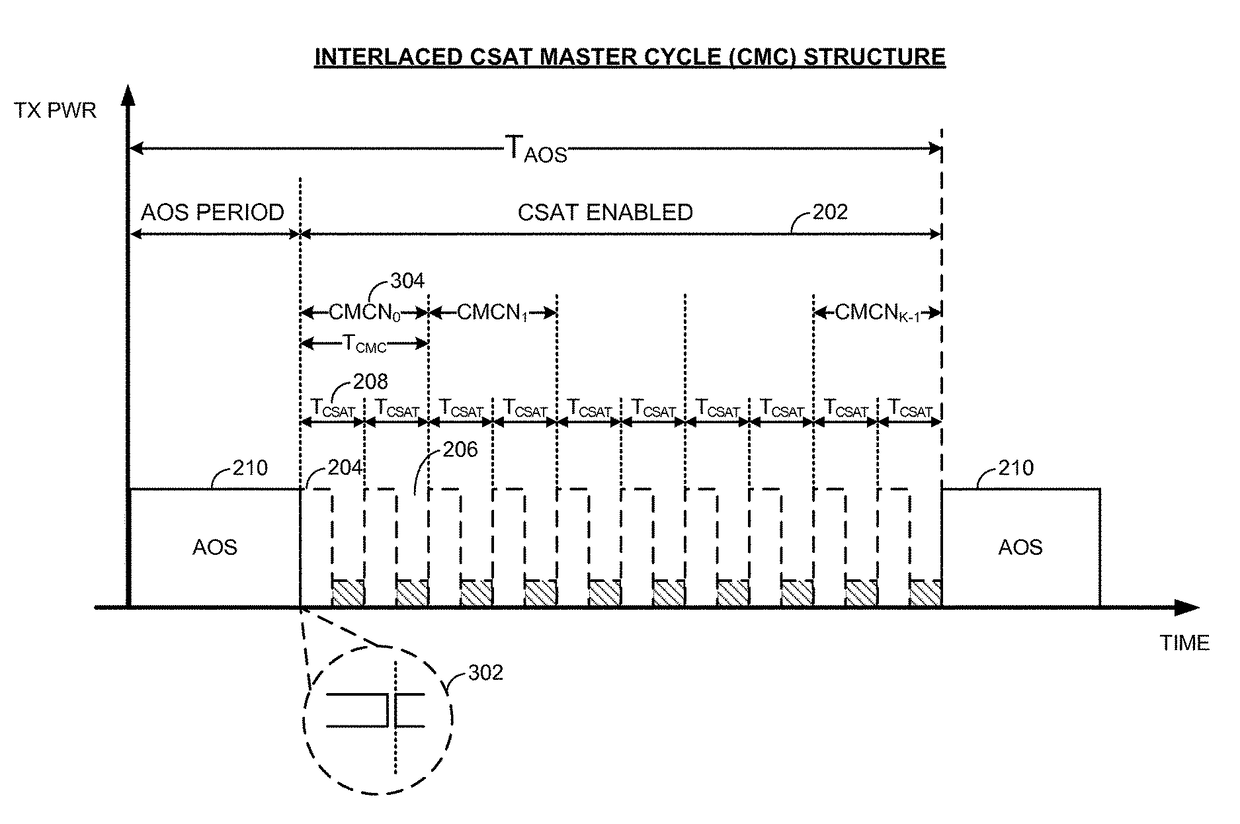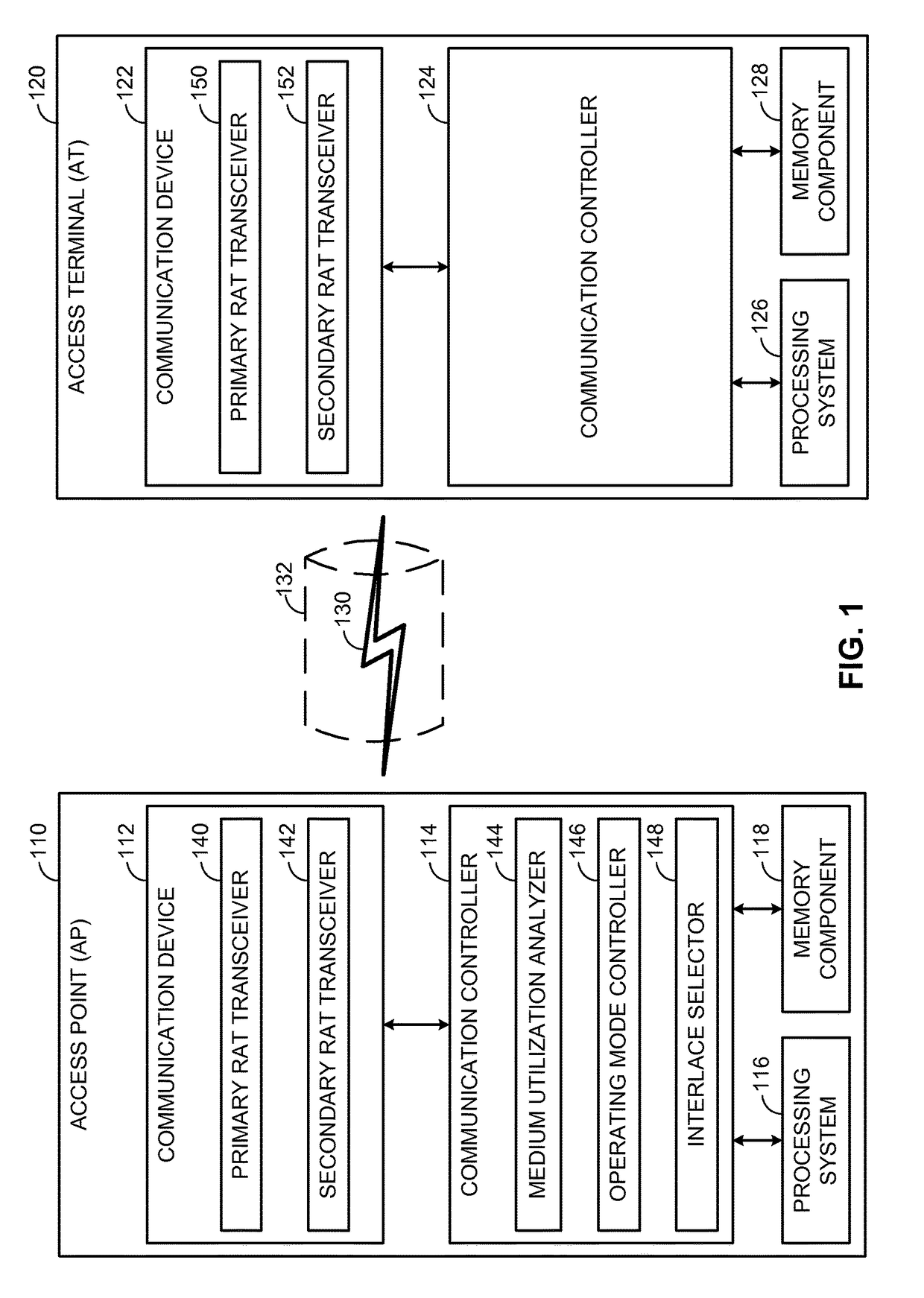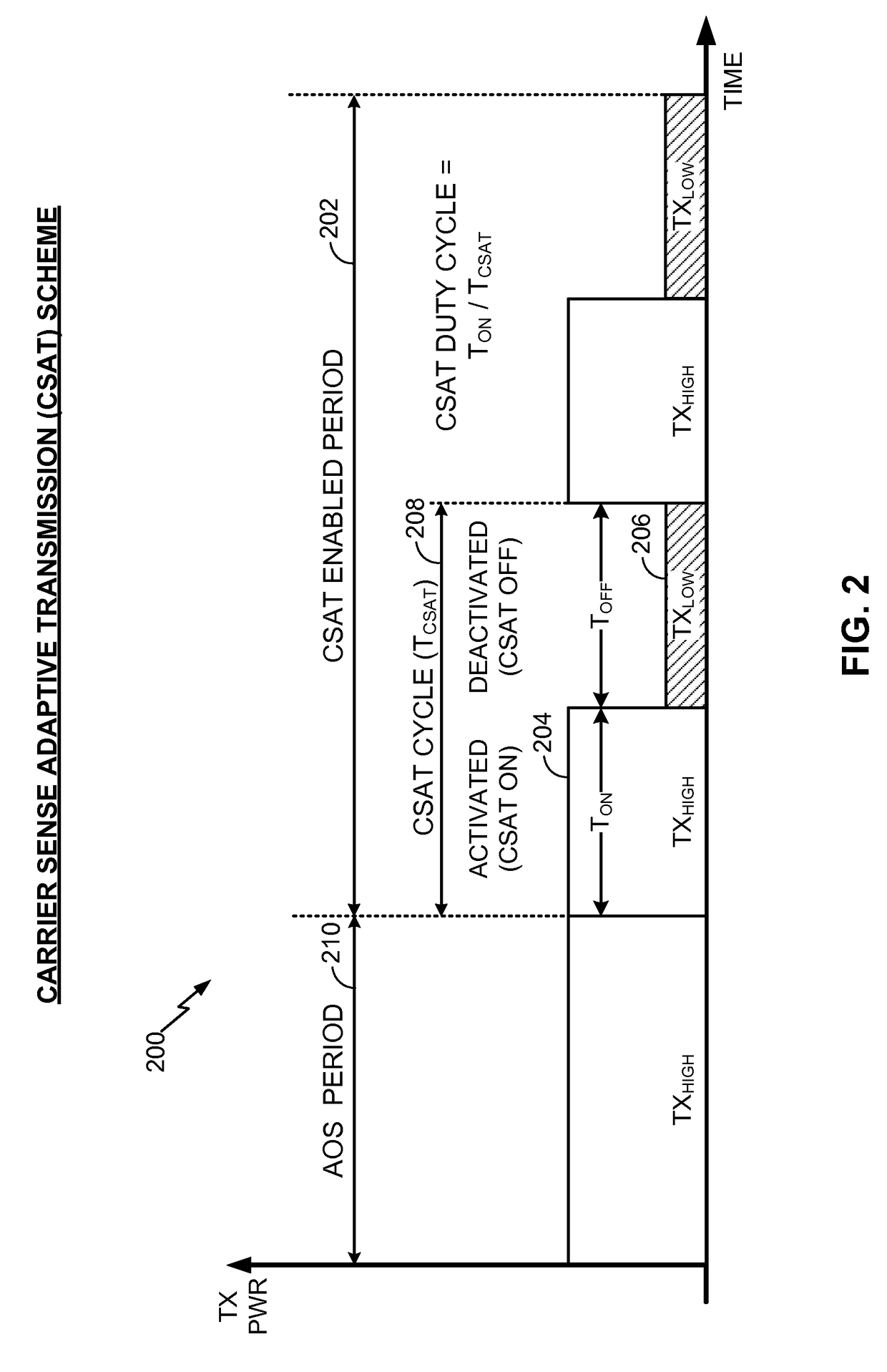Interlaced carrier sense adaptive transmission (CSAT) co-existence in shared spectrum
a carrier sense adaptive transmission and shared spectrum technology, applied in the field of coexistence between wireless devices, can solve problems such as encroaching on operations
- Summary
- Abstract
- Description
- Claims
- Application Information
AI Technical Summary
Benefits of technology
Problems solved by technology
Method used
Image
Examples
Embodiment Construction
[0021]The present disclosure relates generally to an interlacing structure for an example long-term Time Division Multiplexed (TDM) communication scheme referred to herein as Carrier Sense Adaptive Transmission (CSAT). A CSAT communication scheme may define a series of activated and deactivated periods of operation on a given communication medium. Coordination among access points implementing CSAT on different operators may facilitated by the interlacing structure may help to facilitate not only better co-existence with other Radio Access Technologies (e.g., Wi-Fi), for example, but also co-existence among the different operators themselves. The particular interlaces that a given operator may select or otherwise identify for use may be determined in a number of ways. For example, the operators may select alternating interlaces in accordance with an operator ordering, which may be individually inferred and then globally converged upon based on certain medium scanning measurements. As...
PUM
 Login to View More
Login to View More Abstract
Description
Claims
Application Information
 Login to View More
Login to View More - R&D
- Intellectual Property
- Life Sciences
- Materials
- Tech Scout
- Unparalleled Data Quality
- Higher Quality Content
- 60% Fewer Hallucinations
Browse by: Latest US Patents, China's latest patents, Technical Efficacy Thesaurus, Application Domain, Technology Topic, Popular Technical Reports.
© 2025 PatSnap. All rights reserved.Legal|Privacy policy|Modern Slavery Act Transparency Statement|Sitemap|About US| Contact US: help@patsnap.com



